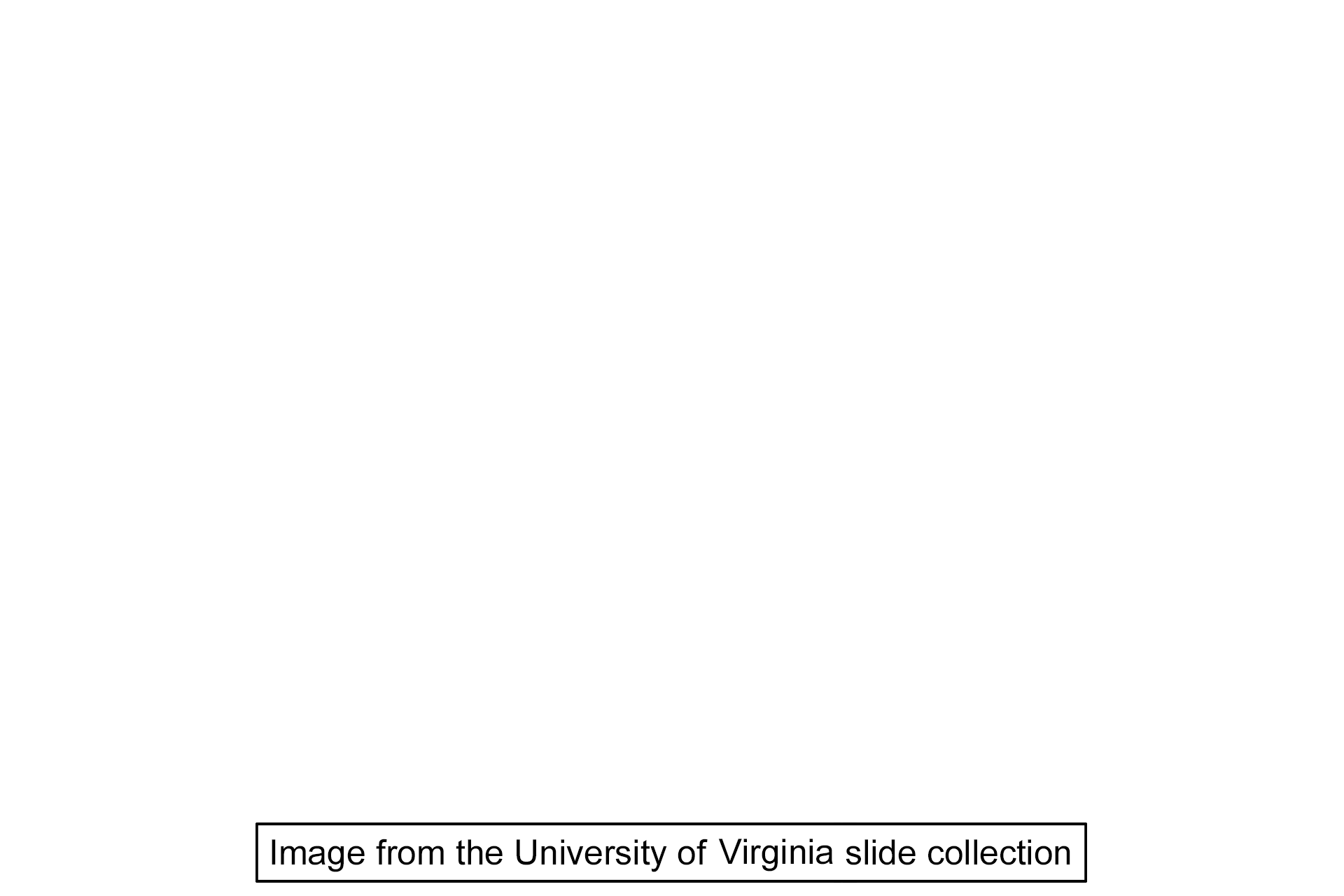
Lip
This image shows a sagittal section of the lip. The external surface of the lip is covered by skin with a thin, stratified squamous keratinized epithelium and hair follicles (on right). The skin transitions to the vermillion zone (red margin) which forms the red portion of the lip, followed by the oral mucosa which lines the inner portion of the lip. Beneath the oral mucosa are numerous minor salivary glands (labial glands). The orbicularis oris muscle (skeletal) occupies the central core of the lip. (Iron hematoxylin/alcian blue stain) 100x, 10x

Skin
This image shows a sagittal section of the lip. The external surface of the lip is covered by skin with a thin, stratified squamous keratinized epithelium and hair follicles (on right). The skin transitions to the vermillion zone (red margin) which forms the red portion of the lip, followed by the oral mucosa which lines the inner portion of the lip. Beneath the oral mucosa are numerous minor salivary glands (labial glands). The orbicularis oris muscle (skeletal) occupies the central core of the lip. (Iron hematoxylin/alcian blue stain) 100x, 10x

- Hair follicles
This image shows a sagittal section of the lip. The external surface of the lip is covered by skin with a thin, stratified squamous keratinized epithelium and hair follicles (on right). The skin transitions to the vermillion zone (red margin) which forms the red portion of the lip, followed by the oral mucosa which lines the inner portion of the lip. Beneath the oral mucosa are numerous minor salivary glands (labial glands). The orbicularis oris muscle (skeletal) occupies the central core of the lip. (Iron hematoxylin/alcian blue stain) 100x, 10x

Vermillion zone >
The vermilion zone, the red portion of the lip, is covered by a keratinized stratified squamous epithelium that lacks hair follicles. The epithelium in this region is thicker than the epithelium of the skin and a stratum granulosum is present, indicating that the epithelium is keratinized.

Oral (lining) mucosa >
The inner portion of the lip is lined by oral mucosa with a thick stratified squamous moist epithelium and prominent dermal papillae. The epithelium of the lining mucosa lacks a stratum granulosum.

Labial glands >
Minor salivary glands, called labial glands, are muco-serous glands present in the submucosa.

Orbicularis oris (skeletal muscle) >
The central core of the lip is formed by the orbicularis oris muscle (skeletal muscle). Contraction of this muscle causes puckering of the lips.

Image source >
This image was taken of a slide from the University of Virginia collection.